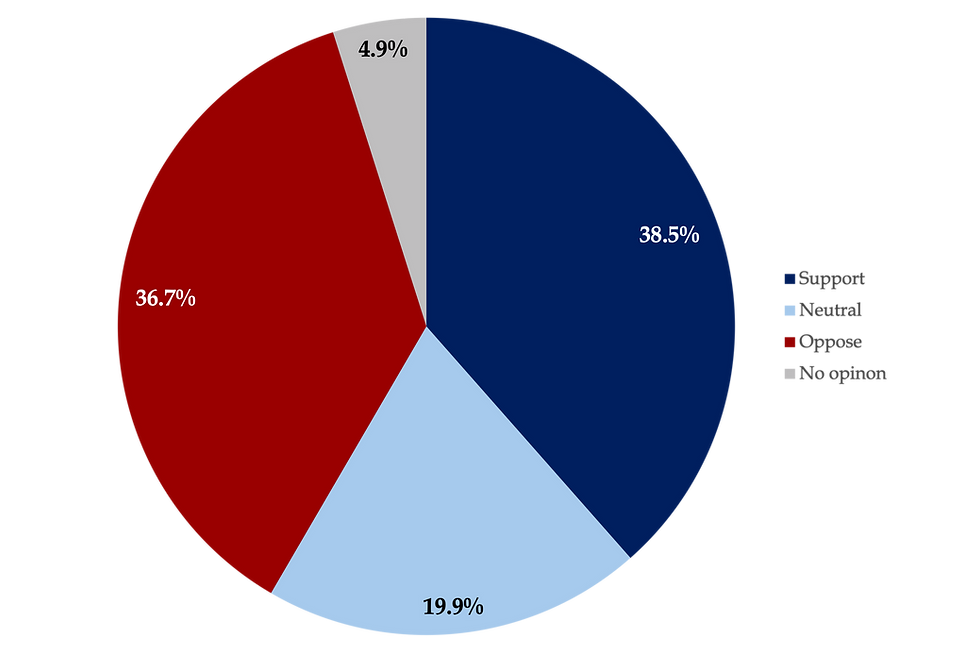The Rule of 37
- Edouard Lyndt

- Oct 2, 2023
- 3 min read
Updated: Oct 9, 2023
The Harbus team explores the optimal strategy for selecting the best option from a series of unknown alternatives.
How does one know when to stop looking? Put in other words, given a certain number of rankable options, what strategy should you adopt in order to maximize your odds of selecting the best option? For the stereotypical option-loving and value-optimizing HBS student, this is likely a question that remains perpetually front-of-mind.
Suppose, for example, that you had just moved to Boston, and were on the hunt for a house. The typical process would entail inspecting a certain number of houses, and then making a decision on which one to make your home. The question that will inevitably arise during this process is—when should you stop inspecting, and make your purchase decision? If you continue to inspect endlessly, you decrease your odds of never stumbling across your dream home, but increase the odds that you do stumble across it, and lose out to someone who purchases it sooner. The underlying challenge in these situations is that there is an inherent tension between ‘looking’, and ‘leaping’. So, what should you do?
Thankfully, one solution to this predicament has been established in a field of computer science known as optimal stopping theory. This solution, popularized by the famous ‘secretary problem’, suggests that the optimal strategy for selecting the best option, is to first establish the consideration set (e.g. how many houses you would consider), then spend the first 37 per cent of your efforts simply ‘looking’ (inspecting houses, but never purchasing them), and finally, select the next option which is better than all the options that came before it.
To illustrate this, we will return to the house hunting example. Suppose you had decided that you would only consider two houses—hypothetical House A, and House B. Suppose also that House A was the superior of the two, and that you do not know which order you will encounter these houses in. As such, you will either end up inspecting House A first, and then House B, or House B first, and then House A, with equal probability. In this simplified problem, it does not matter what strategy you choose to adopt. Your probability of selecting the best house (House A), will always be 50 per cent.
The problem becomes more interesting, however, once we introduce a third, fourth, fifth house (and so on). In the three house example, suppose that House A is superior to House B, which in turn is superior to House C. Given that you do not know which order you will encounter these houses in, there are now six different scenarios that could play out, as shown in the rows of the table below. Additionally, you can now explore three strategies which are available to you, for selecting the best house, as shown in the columns of the table:
Always select the first house you inspect; or
Always discard the first house you inspect, and then select the next house that is superior to it; or
Always discard the first two houses you inspect, and by default, select the third house.

As illustrated, in the three house example, the optimal strategy is Strategy #2, which gives a 50 per cent chance of selecting the best house, House A. As it turns out—as the size of your consideration set (N, or the number of ‘houses’ you would consider) expands, two things happen. First, the maximum probability that you manage to select the best option within your consideration set (the proverbial ‘House A’) converges on 1/e, or approximately 37 per cent. Second, the optimal strategy for maximizing said probability converges on rejecting the first N/e, or 37 per cent, of the options you come across, and then selecting the next best option you encounter after that. Hence the creatively named ‘Rule of 37’.
Put in terms that our readership is probably more interested in—if you are looking for the love of your life, and decide you are willing to date 100 people (and somehow find time for this at HBS), you should strictly reject the first 37 people you meet, and then select the first person who you like better than the first 37 you dated. I would note this ignores certain complexities, like the ability to revisit people you have already been on dates with and rejected, but for the purpose of this article, we will assume those ships have sailed. Happy ‘house’ hunting.

Edouard Lyndt (MBA ’25) is from Australia. An example of someone who took the ‘jack-of-all-trades’ thing too far, he has explored a range of career paths spanning M&A, strategy, product management, and even (very briefly) professional fighting. Outside of work, he enjoys reading, cooking, and exercise.




Comments